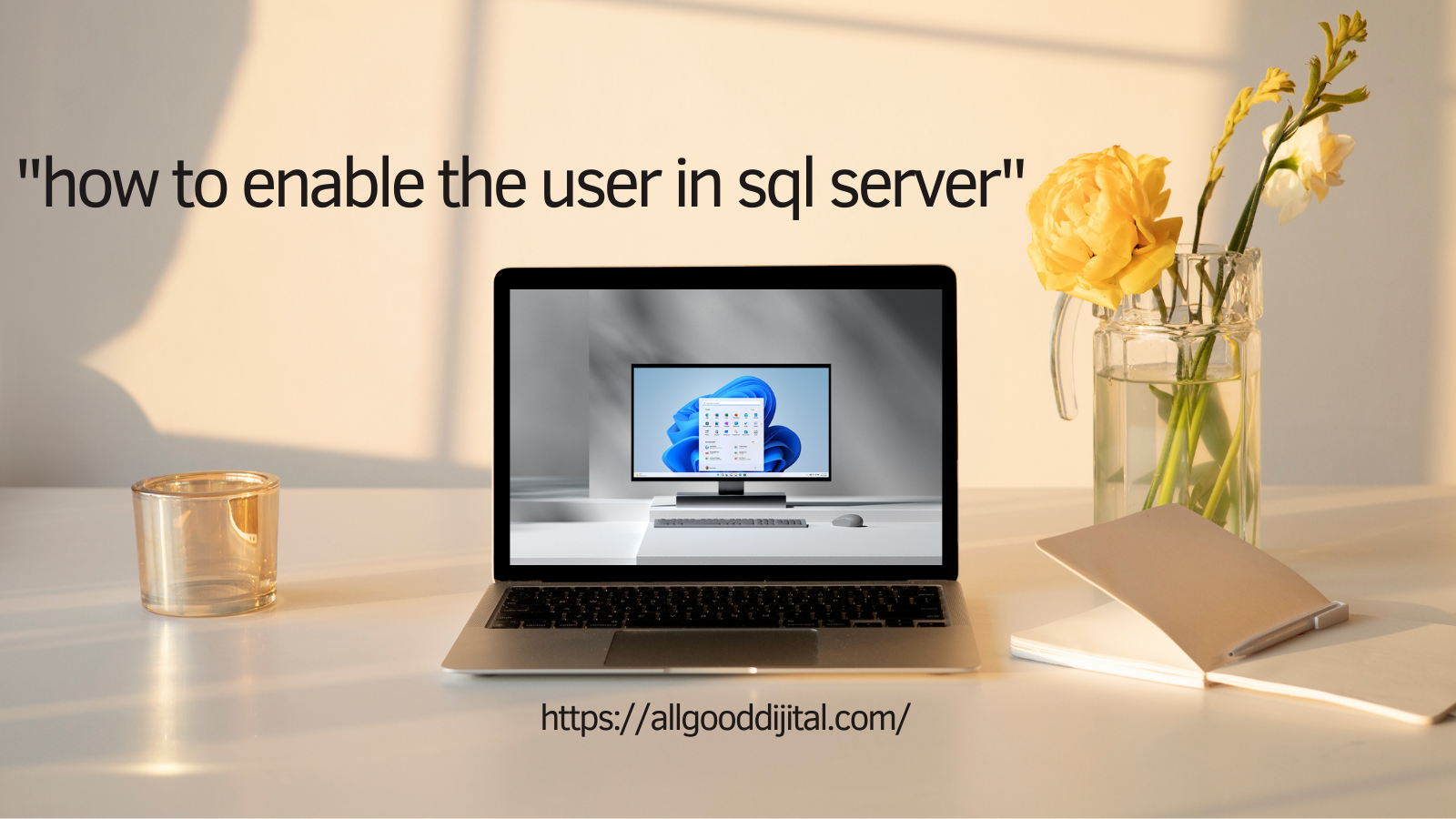how to enable the user in sql server

Enabling users in SQL Server is key for good SQL Server user management. It’s needed for many reasons, like account lockouts or changes in user roles. Knowing how to enable users in SQL Server helps with better user access and keeps your database secure and easy to use.
Database administrators need to understand user management well. This ensures users have the right permissions to do their jobs well.

Understanding User Management in SQL Server
User management in SQL Server is key to keeping data safe. It includes tasks like creating, changing, and removing users. This is vital for security and controlling who can see what in the database.
Good SQL Server user management means only the right people can see important data. This protects the company’s information.
What is User Management?
SQL Server user management covers many tasks. It’s about managing who can do what in the database. This includes giving users roles that decide their access levels.
Admins must watch who has access closely. Bad access can leak important info and break rules.
Why You Need to Enable Users
Knowing why to enable SQL Server users is important. It helps keep the database running smoothly. There are good reasons to do this, like:
- Reintegrating returning employees
- Troubleshooting access-related issues
- Providing temporary access for specific projects or collaborations
Understanding SQL Server user access helps make a safe and efficient database. It shows why enabling users is crucial for keeping things running.
How to Enable the User in SQL Server
Enabling users in SQL Server is key for database management. It makes sure users can access what they need while keeping data safe. Knowing the steps and common problems helps make this process smoother.
Step-by-Step Guide to Enabling a User
Here’s how to enable a user in SQL Server:
- Open SQL Server Management Studio (SSMS).
- Connect to your database.
- Go to Security > Logins.
- Right-click on the user and choose “Properties.”
- In the “Status” page, make sure “Login” is set to “Enabled.”
- Check and adjust user permissions as needed.
By following these steps, you can enable SQL Server users. This lets them access the resources they need.
Common Errors When Enabling Users
When enabling users, you might run into some issues:
- Permission conflicts can stop user activation.
- Disabled password policies can block login attempts.
- Wrong user settings often cause confusion and access problems.
Knowing these common problems helps you fix them quickly. This makes managing SQL Server users easier.
Best Practices for User Security Management
To improve SQL Server user security, follow these tips:
- Do regular checks on user access rights.
- Use role-based access control for easier permission management.
- Set up strong password policies to protect users.
These practices help make the enabling process smoother. They also keep your SQL Server data safe.
Conclusion
Understanding SQL Server user enablement is key for good database management. This article showed why enabling users is important. It’s about keeping your database safe and running smoothly.
By learning to enable users right, admins can stop unauthorized access. They also make sure the right people have the right permissions.
The steps to enable users are clear and help avoid mistakes. Using best practices in managing users makes your system more secure and efficient. Keeping up with user management is crucial in today’s fast-changing tech world.
As you work on SQL Server user enablement, remember to enable users while keeping security tight. This approach helps admins create a trustworthy database environment. It’s a big step towards success for your organization.
FAQ
Q: What is user management in SQL Server?
A: User management in SQL Server means creating, changing, and deleting database users. It also involves giving roles and permissions. This ensures only authorized people can access sensitive data.
Q: Why is it important to enable users in SQL Server?
A: Enabling users is key to giving back access to those who lost it. This could be due to not using the system, a decision by an admin, or a change in roles. It keeps work flowing and allows for temporary access when needed.
Q: How can I enable a user in SQL Server?
A: You can enable a user in SQL Server using SQL Server Management Studio (SSMS) or a Transact-SQL script. Both ways let you change user status and permissions.
Q: What are some common errors encountered when enabling users?
A: Common problems include permission issues, disabled password rules, or wrong user settings. These can make enabling users hard. Troubleshooting is needed to fix these issues and get access back.
Q: What are best practices for managing SQL Server user security?
A: Good practices for managing user security include regular audits of access, using roles, and strong password rules. These steps help keep sensitive data safe.
Q: How does enabling users affect database security?
A: Enabling users must be done with care to ensure only the right people get in. Proper management lowers the chance of unauthorized access. It also helps follow security rules.
Q: What is the SQL Server user enablement process?
A: The SQL Server user enablement process includes checking user status, running enablement commands, and adjusting permissions. It also makes sure everything follows security rules.








